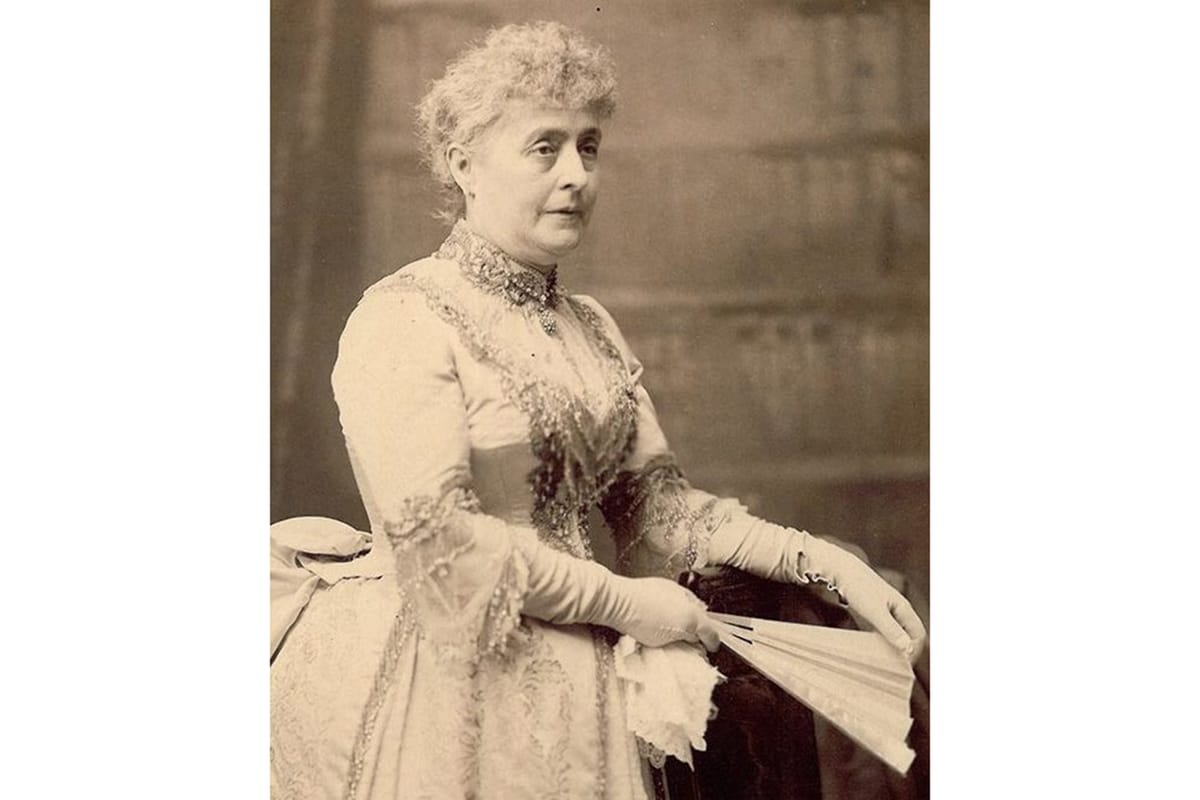Local Legends: Oxford's First Lady
Caroline Scott Harrison, an Oxford native and wife of the 23rd U.S. President, had a deep appreciation for music, history and women's rights.

Caroline Lavinia “Carrie” Scott Harrison, Oxford’s most famous celebrity, served as the First Lady of the United States from 1889 to 1892. The actions she took before and during her time in the White House, rooted in her progressive beliefs, did much to advance the position and set the groundwork for what the office would later become.
Harrison was born in Oxford on Oct. 1, 1832. At that time, Oxford was still in its infancy, having only been established 22 years earlier.
Her father, Rev. Dr. John Witherspoon Scott, was a Yale graduate, professor of mathematics and natural sciences and a Presbyterian minister. He accepted a position to teach at Miami University and relocated to Oxford along with her mother, Mary Potts (Neal) Scott in 1828.
Harrison spent her first 12 years in Oxford, where she developed a close relationship with her parents and siblings, Elizabeth (Scott) Lord, Mary (Scott) Spear, John Scott and Henry Scott. The Scott family struggled financially at times, but despite this, her upbringing was a cheerful experience, though still heavily religious, and full of music, literature and intellectual exercises.
Harrison seemed to have embraced this lifestyle, as an 1841 letter from her father to her mother stated, “tell Caroline she must try to and act the lady now, and leave off her romping and venturesomeness.”
The Scott family’s experience in Oxford was not without friction. Harrison’s father embraced the “New School” Presbyterian ideals and supported Miami president Rev. Dr. Robert Hamilton Bishop, who shared these beliefs. Following a change in administration at Miami in 1844, in which the “Old School” Presbyeterians took charge, both men were ousted.
Scott left Oxford to teach at Farmer’s College in Mt. Healthy. While in Mt. Healthy, Caroline met and fell in love with one of her father’s students, Benjamin Harrison, who had been visiting the family home for math tutoring.
The family remained there for only five years before returning to Oxford, where Scott became the first president of the Oxford Female Institute, now the Oxford Community Arts Center. Benjamin Harrison followed the family to Oxford, enrolling at Miami University.
Caroline Scott Harrison attended Oxford Female Institute, studying language, music and art, and graduated in the class of 1852. By the time of her graduation, she had already been on the school’s staff as an assistant piano instructor and soon moved to Carrollton, Kentucky, to teach music at an all girls school. While there, she suffered her first lung ailment and returned to Oxford within a year.
She and Benjamin Harrison married on Oct. 20, 1853 at the Scotts’ home, with her father officiating. They had been secretly engaged for a year by then.
Their first child, Russell Benjamin Harrison, was born in Oxford in 1854. After a year of living at the Harrison Family Farm in North Bend, the Harrisons relocated to Indianapolis, and her husband started a struggling law practice.
While in Indianapolis, their second child, Mary Scott “Mamie” (Harrison) McKee was born, as was another daughter who died in infancy.
At the start of the American Civil War, Benjamin Harrison became an officer in the Union Army, and went on to make a name for himself. Caroline Harrison wasn’t idle during her husband’s absence, raising their children, supporting the activities of her church, volunteering at local orphanages and engaging with civic groups, such as literary societies.
This may have been the beginning of her interest in the causes she would support as her husband began his post-war political career. Embracing progressive views, Harrison was a notable early supporter of Women's Rights and brought attention to the issue after her husband became president. He also helped to raise funds for Johns Hopkins Medical School, but only on the condition that the school accept women students.
Although she greatly enjoyed painting, dancing, literature — especially Dickens — and playing piano, Harrison was not highly regarded in Washington society. She was often ill with the lung issues she dealt with throughout her life and also followed the highly popular Frances Cleveland as first lady, inviting comparisons of the two. Her progressive views probably didn’t help.
While First Lady, Harrison was quoted as saying, “I have about come to the conclusion that political life is not the happiest, you are [so] battered around in it that life seems hardly worth living.”
However, she made good use of her time at the White House, completing as many renovations as Congress would fund, working to eradicate a rat infestation by employing the use of ferrets, and purchasing new china and decor. She also devised an architectural plan for enlarging the White House that was later largely enacted.
Additionally, Harrison had an interest in historic preservation and collected artifacts from previous presidential administrations to be archived. Her interest in history and support of the establishment of the Daughters of the American Revolution led to Harrison being named as the first president general of the organization in 1890.
Harrison came down with another round of lung ailments in 1892, which were diagnosed as tuberculosis. Although she traveled to the Adirondack Mountains for treatment, she succumbed to the disease in the East Room of the White House on Oct. 25, 1892. Her body was taken back to Indianapolis for burial in the Crown Point Cemetery.
Oxford’s Caroline Scott Harrison Chapter of the DAR is named in her honor.
Brad Spurlock is the manager of the Smith Library of Regional History and Cummins Local History Room, Lane Libraries. A certified archivist, Brad has over a decade of experience working with local history, maintaining archival collections and collaborating on community history projects.




